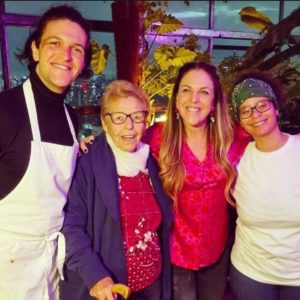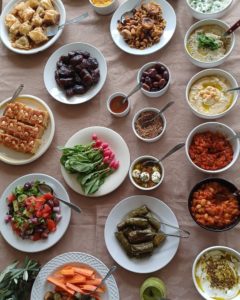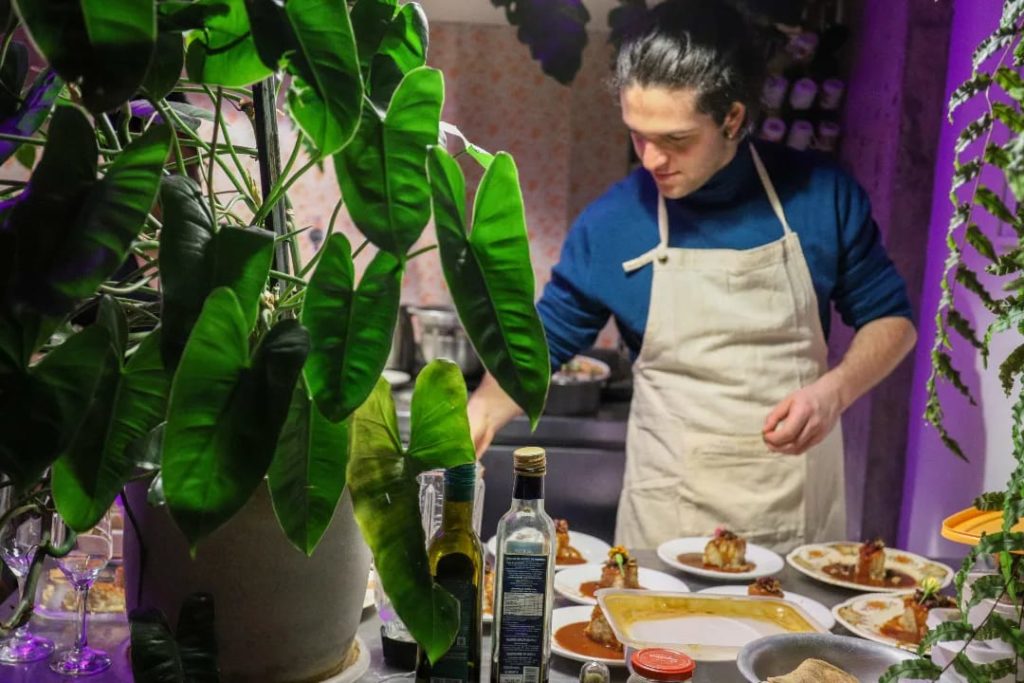São Paulo – Brazilian Felipe Kaizer (pictured above) grew up in a family that cherished cooking. What he didn’t know was he would retrieve the origin of these flavors and make them the basis of his specialization as a chef. One of Felipe’s grandmothers, Emilia Kaizer, was born in Cairo, the capital of Egypt, and from there came recipes and influences she would share with her grandson.
Still young, at 18, Emilia migrated with her family from Egypt to Brazil. She spoke only French and brought elements of Arabic culture and language through cooking. “Dishes, such as hummus, which means chickpeas, remained in Arabic. My grandmother cooks a lot, and I talked a little with her about the recipes; I often had lunch at her place. She made kafta and salads with wheat and herbs. My grandmother’s sister, Mirela, used to cook well. And my grandmother’s parents, including her father too, which is curious because that was less expected of a man,” said Felipe.

But his time in Israel helped the chef learn more about Middle Eastern cuisine. “That’s when I realized I needed to value this, which belongs to my family,” he said. There, he delved into restaurants and family recipes and discovered dishes from Algeria, Morocco, Tunisia, and even Yemen. “I actively researched and took advantage of this mixture, with hints of various countries,” he revealed.
Brazilian-Egyptian food
On his return to Brazil, inspired by the experience with his origins, Felipe decided to leave restaurant kitchens and become a personal chef, sharing his expertise in private lessons. Another front of his work is buffets and dinners, especially those with Egyptian and Arab themes.
One of the places he cooked this year was Andar 43. The site used to house an office room on the penultimate floor of Mirante do Vale, São Paulo city’s second-tallest building. The building is in front of the Anhangabaú Valley, in the capital’s city center, and the new owner, of course, took advantage of the view. But not only. Today the environment has been transformed into a small urban jungle with native plants and antique furniture. Special events take place there, such as the Brazilian-Egyptian dinner signed by Felipe Kaizer in September this year.

The menu highlighted the cuisine of the North African country, at the same time proposing the use of Brazilian ingredients in the dishes. “In the case of hummus, I swapped chickpeas for butter beans; there was also scarlet eggplant (gilo) baba ghanoush, among others. My grandmother even went to the first dinner. The feedback from people was excellent,” detailed Felipe. “I really like working with fish and seafood, and I started looking for recipes in the Arab world with these ingredients. So, it’s another approach,” he pointed out about how he has expanded his creations.
The chef said the ingredients he has in his pantry are generally easily accessible in Brazil. There are, however, those he prefers to bring back from international trips, such as zaatar and Moroccan paprika he used recently, and those he considers more challenging to find, such as the grape leaf itself, which he uses for the stuffed grape leaf rolls. “Despite being used a lot in local Arab restaurants, I had a lot of trouble finding the leaves in the quality I wanted. And the molokhia leaf, used in a typical Egyptian soup, is also hard to come by; I hardly find it. Other things, such as rose water, orange water, and cumin, are more accessible. By the way, the basis of Egyptian food is cumin, for sure,” declared the chef.

Other menus he prepared at Andar 43 also had Arab cuisine as a whole as a motif and even a Brazilian ingredient: cassava. “The idea is to hold more dinners there. I specialize in and want to work with Middle Eastern food and fish. But if the person asks for a different menu, I will always find a way to add an Arab touch. It’s my trademark. I make a point of explaining the dishes with Arabic names. I can tell the origin, and we have this exchange. Recently, an Algerian participated in one of the events and said the food was just like in his country, very legit!” celebrated the chef.
On his Instagram account, @cheffkd Felipe shows more about his work and the day-to-day search for ingredients to craft his dishes. At events, he has the support of a team, which varies depending on the order size. “I can work a lot on creativity. I like meeting new people and being in different environments. I have my faithful sidekick Rana, who has already made brunches with a northeastern Brazilian theme on Andar 43. And I have other people who help, such as waitpeople, kitchen, and cleaning staff,” he said.
But in addition to creative work, buffet production includes shopping, customer service, and budgeting. “It’s growing up. The idea is to have our own space next year. I need to value myself and the people who work with me because making Arabic dishes is a pleasure, but it’s also a lot of work,” concluded the chef.
Translated by Elúsio Brasileiro




